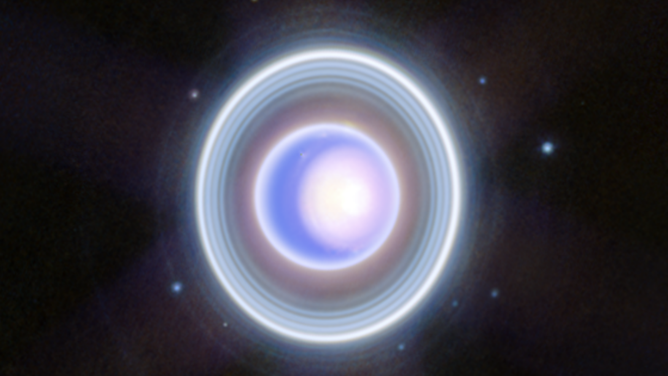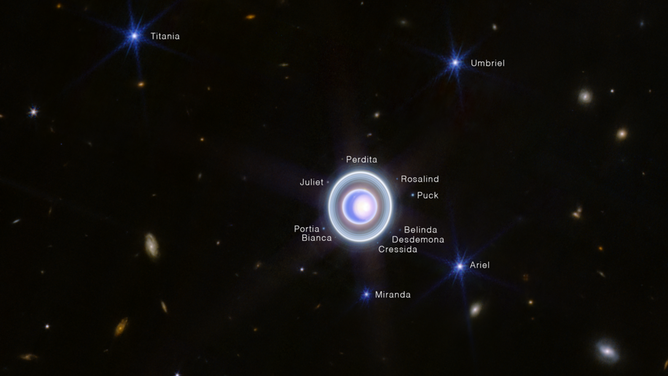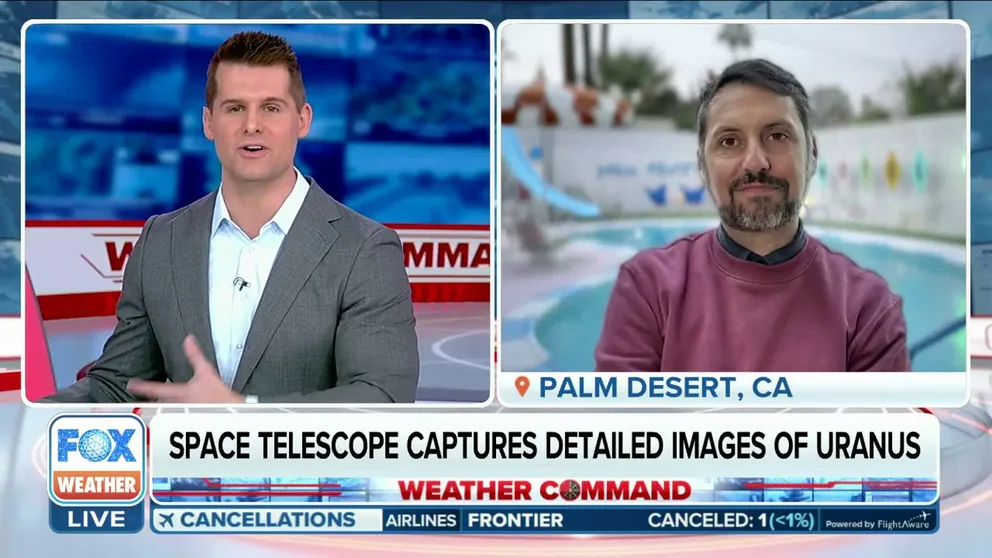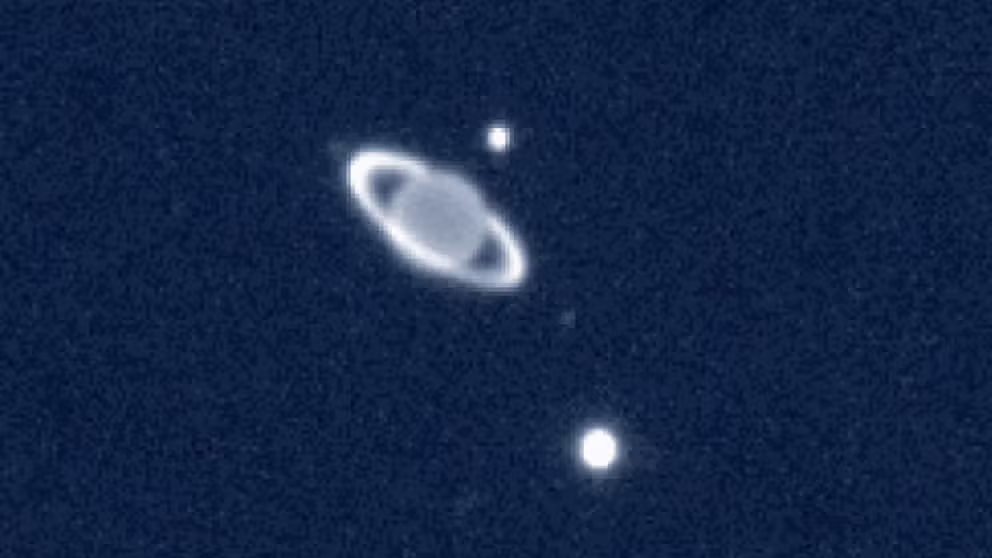New photo of Uranus taken by Webb telescope shows vivid details of 7th planet
NASA’s James Webb Space Telescope was launched on Christmas Day 2021. The space agency said Uranus’ north polar cloud cap imagery is the most striking. The mean temperature of the planet is -320 degrees.
Celebrating another year of James Webb Space Telescope's stunning images
Kevin Hainline, one of the scientists working with the James Webb Space Telescope, says that every time they receive a photo dump from the telescope, they get to see a part of space in a new light.
NASA has released new imagery of Uranus this week that scientists said is the most stunning photo yet of our solar system’s seventh planet.
The James Webb Space Telescope, which launched nearly two years ago, took imagery of Uranus’ rings, moons and polar region.
Discovering Uranus
Uranus was discovered 241 years ago.
Located within the rings of gas and space debris is a planet whose mean temperature is one of the coldest in the solar system at -320 degrees.
With the use of what is described as unparalleled technology, scientists were able to observe the planet, which is nearly 2 billion miles away.

Average temperatures of planets in our solar system.
(NASA)
HUBBLE SPACE TELESCOPE CAPTURES DAZZLING IMAGE OF INTERACTING GALAXIES
"One of the most striking of these is the planet’s seasonal north polar cloud cap," authors of the recent NASA update stated. "Compared to the Webb image from earlier this year, some details of the cap are easier to see in these newer images. These include the bright, white, inner cap and the dark lane in the bottom of the polar cap, toward the lower latitudes."
It is believed seasonal impacts and storms could become more prominent as the polar region continues to point more directly toward the Sun.
Uranus has a tilt of more than 90 degrees, which causes extreme seasons on the icy, windy planet.
Due to it taking 84 years to complete one orbit around the Sun, seasons change about every 21 years, setting the stage for a solstice around 2028.
In addition to paving the way for climatological observations, image clarity of its 13 rings could help in preparations for a future spacecraft mission, which would not launch before 2030 and arrive about a decade later.

Image of Uranus from the NIRCam (Near-Infrared Camera) on NASA’s James Webb Space Telescope.
(NASA / FOX Weather)
WEBB TELESCOPE FINDS SURPRISES WITHIN HEART OF MILKY WAY GALAXY
The space agency credits the telescope’s infrared technology for making the imagery possible.
Previous spacecraft, such as Voyager 2 in the 1980s, were trained on the planet, but since it used visible wavelengths instead of infrared wavelengths, many of the dynamic features were not observable.
NASA has not stated what scientists will train the telescope’s sights on next. If the past two years are any indication of the potential, space enthusiasts will be in store for more stunning treats.
The space agency believes operations of the James Webb Space Telescope have exceeded expectations, and the space observatory will easily surpass its expected 10-year lifespan.

Uranus with some of its 27 moons
(NOAA)

